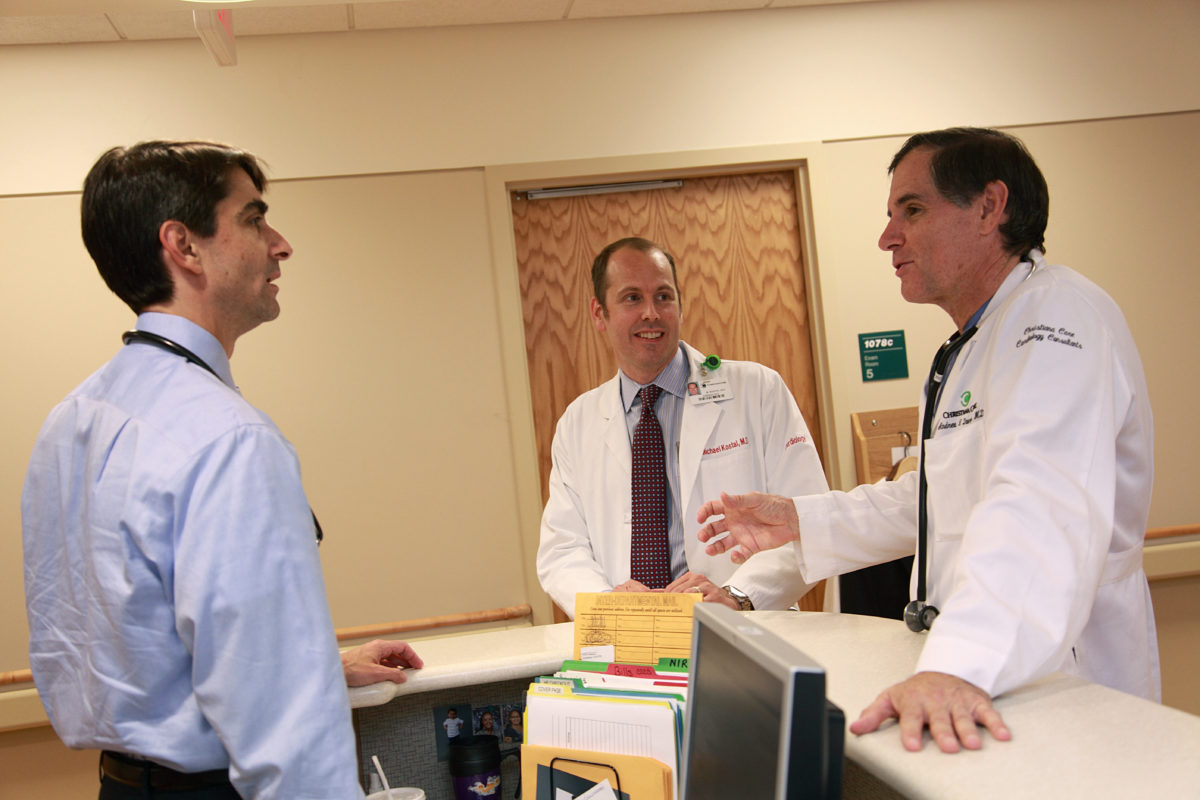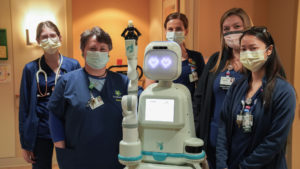For the first time in as long as he can remember, emergency medicine physician Timothy Shiuh, M.D., FACEP, didn’t have to play the part of a hunter-gatherer trying to track down a succinct medical history on an elderly patient who presented with chest pain during a recent shift in the Emergency Department (ED).

Thanks to the rollout deployed in the Heart and Vascular practices of the ambulatory component of the integrated PowerChart electronic health record, all of the information Dr. Shiuh needed — office notes by the patient’s cardiologist, diagnostic results and the phone communication records among the cardiologist, the office nurse and the patient — was readily available to him in a click, at the patient’s bedside in the ED.
“For years, we’ve had information spread across multiple electronic medical records,” said Dr. Shiuh, one of the drivers of the implementation and optimization of Christiana Care’s integrated electronic health record in his role as chief medical information officer.
Previously, ED physicians had no access to outpatient cardiology records and would have to either reach out to the on-call provider to fill in the gaps or render the best possible care without vital information, he said. By increasing transparency of medical information, integrated records are helping to improve communication about a patient’s medical condition through care transitions, reducing redundancy and unnecessary care. Ultimately, he said, it enables better care for patients.
“Often patients can’t provide us an adequate history because of their illness or incapacity,” said Dr. Shiuh. “Now, with the PowerChart integration, we will have complete transparency of all the information about a patient that is gathered in any of our venues of care within the health system.
Multiple venues, one space
Sri Donepudi, M.D., MMM, FAAFP, a family medicine physician and assistant chief medical information officer who has informatics responsibility for the PowerChart ambulatory technology initiatives, described the move toward an integrated record as a huge benefit for both patients and providers.

“Those on the hospital side will have ready access to clinical interactions and be better able to understand when a patient hits the ED what led them to that outcome and what the events were preceding their presentation there,” she said. “On the ambulatory side, when a physician is picking up patient care after an ED visit or hospital stay, he or she will have information readily available about the care provided in-house. An integrated record helps us achieve mutual goals of reducing readmissions and making sure we have good handoffs of care. We no longer have to log into two separate systems to try to piece together needed information. We are all now living in one space.”
Cardiologist Roger Kerzner, M.D., FACC, who is the clinical director for specialty services for The Medical Group of Christiana Care and a team leader on the PowerChart ambulatory rollout, said that the benefits of the new system will only grow as primary care and more specialty practices are brought online.
“It is so much easier for any doctor on the inpatient side to know what has happened on the outpatient side and vice versa,” he said.
He recently called the hospital to share information about one of his patients and found that the physician already knew the whole story thanks to notes he had entered in PowerChart.

“We have never had this level of integrated sharable information before,” said Dr. Kerzner. “To have all of us on one record, both inpatient and outpatient, allows us, as a large health care team, to collaborate so much more efficiently. The tool itself has the ability to more easily provide data about our patients — information we have struggled to get in the past. Integration and collaboration prepare us to really focus on population health.
“We are learning the system well with this rollout in cardiology and vascular practices,” he said. “It will take us some time to get there, but the promise is there. I can see it in the system. This is set up to be a lot better.”
Fellow cardiologist Mike Kostal, M.D., agrees. “Before integration, what happened in the outpatient cardiology world had been invisible to the rest of the world,” Dr. Kostal said. “It is now much easier to collaborate on care when the treatment plan is very visible to other providers”
Dr. Kostal is part of the specialized “tiger team” of clinical and informatics experts helping to drive the ambulatory rollout in cardiology and vascular practices.

“This single, integrated record will provide the health system meaningful tools to look at broader opportunities of how we serve patients and broader populations of people,” he said.
The ambulatory move to the same record used for inpatient care will allow seamless flow of clinical information about a patient — whether she is cared for in the ED, has outpatient surgery, is hospitalized, or sees a primary care or sub-specialty physician in one of The Medical Group’s 40 ambulatory practices.
It is not unusual for large systems such as Christiana Care to have organically grown multiple platforms, according to Dr. Donepudi. Yet, with the focus now on population health and the need to be able to share information and track patients across the continuum, she said the benefits to being on an integrated platform demonstrate an absolute commitment to both providers and patients.
The rollout involves intensive collaboration between clinical and information technology experts to fine-tune workflows, policies and protocols that meet practice needs.
“We have grown a lot as an organization in our synergistic partnership between IT and operational and administrative leadership to balance the needs of practices with the opportunities and limitations of the technology platform itself,” said Dr. Donepudi. “Christiana Care’s investment in converting the current ambulatory EHR from GEMMS and Centricity to Cerner’s integrated PowerChart platform — and to transition paper practices over to Cerner — demonstrates an absolute commitment to our providers in terms of providing synergy across their work in taking care of our community. It also shows a commitment to our community by allowing us to share information that helps us recognize how to better serve our patients and address needs across the entire continuum of care in our organization.”



